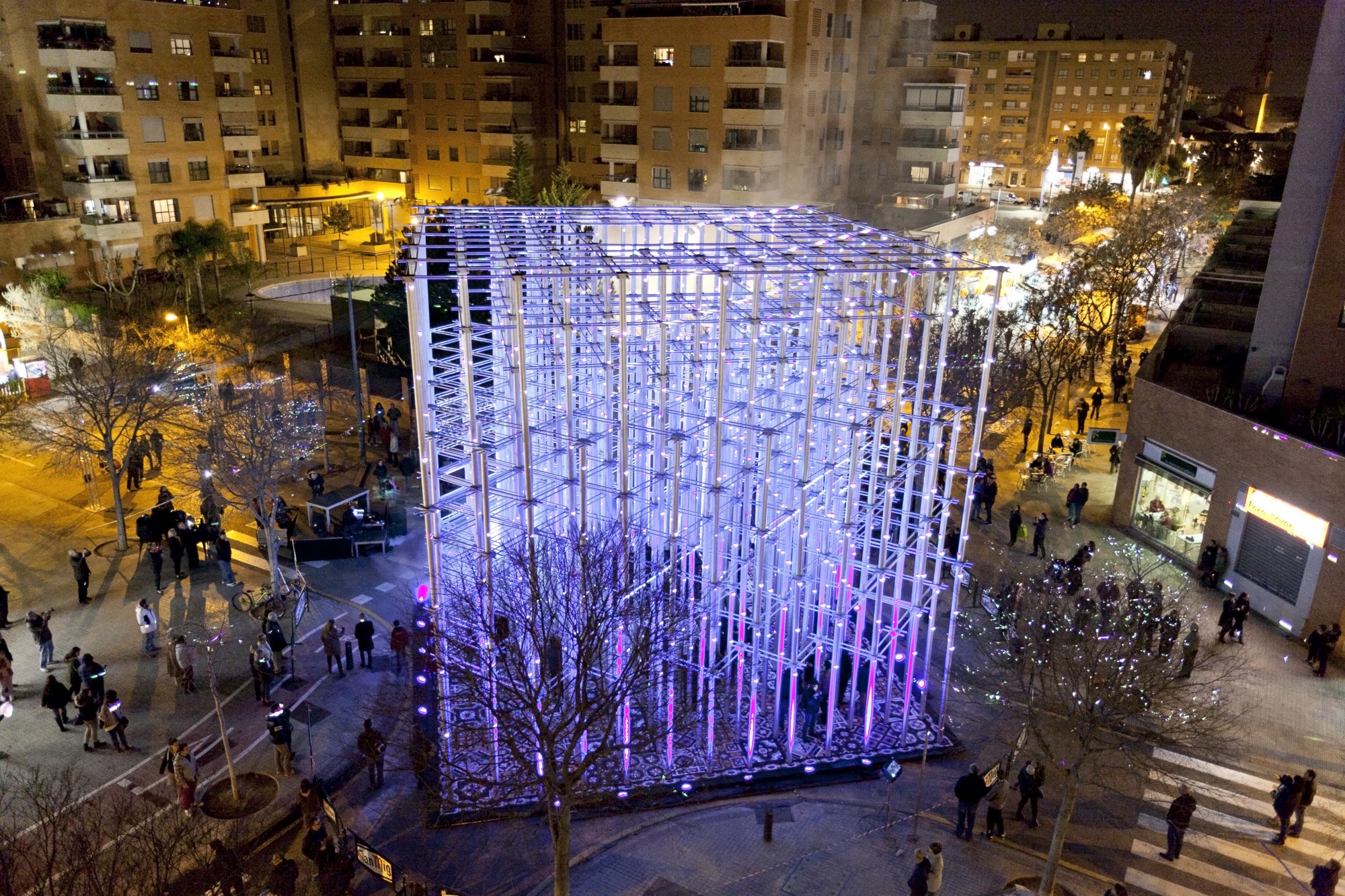Archelectic: EKKLESÍA by Pink Intruder

We’re excited to launch a new blog series called Archelectic. With Archelectic, we’re exploring a diverse range of styles as well as the inspirations, tools, material choices and overall processes that make these projects possible. Our goal is to uncover unique, progressive and visually captivating new works from both up-and-coming designers as well as creative veterans.

Pink intruder is a project organized by a group of artists with expertise in performing interventions in urban space, edition of art and the organization and coordination of cultural events.
EKKLESÍA is an installation made with cardboard tubes with a metallic appearance atop a mosaic made of 96,000 wooden pieces.
During the Fallas festival in Valencia held every year the ultimate goal of these installations is to be burned to celebrate the arrival of spring. In this context we built a structure entirely of cardboard and wood joints. The purpose was to investigate to what extent we could carry up this type of structure, and also to place in a traditional context a contemporary image to provoke the debate between tradition and modernity.

The installation represented a temple where citizens can meet and realize the power they have to change things through debate and confrontation of ideas. Hence the title Ekklesia, as this was the ancient Greek assembly that met once a year between elections to decide if someone was annoying for the polis, and if that was the case expel him from the city for ten years.
The facility was visitable and columns were screen printed with real political messages with critical messages of citizens, trying to highlight the emptiness of political discourse and the need to provide it with content to generate discussion and be owners of our future.

The stage on which the installation was settled was a mosaic of 96,000 pieces based on designs of Nolla Mosaic, a traditional Valencian ceramic that was lost in the middle of 20th century. On the one hand its function was highlight a lost heritage and to emphasize that any innovation in a traditional context should be based on a thorough knowledge of tradition.
At the same time we also wanted it to be a participatory project and therefore the completion of the mosaic was made in different workshops with children at risk of social exclusion and various neighborhood associations.
“The ekklesia (from Ancient Greek “ἐκκλησία ‘) was the main assembly of Athenian democracy in Ancient Greece. Ostrakon (plural, ostraka), literally piece of vessel, is the Greek term that has come down to us as the famous exile by ostracism, and it was nothing but a law allowing citizens to banish for some time political or other harmful citizens for Polis. Over the potsherds the citizens had to write the name of the politician who was a potential danger to the community. In the Athens of the V century B.C. was an important political institution, safeguarding its democratic system of government from internal enemies. To apply law of ostracism the Ekklesia gathered once a year debating whether there was sufficient evidences to implement the ostracism, if that was the case the ostrakophoria was called , assembly where ostracism was voted. Such voting was held in the agora, with about 6,000 citizens entitled to vote. And the vote consisted in writing down on the piece of ceramic uóstrakon the name of the person that everyone thought it should be ostracized. Once the votes were counted the one with most votes was banished from Athens for 10 years, the exile was granted 10 days to prepare his departure from the Polis. The Athenian ostracism was a preventive law, which anticipated future conspiracies to establish tyranny.”


